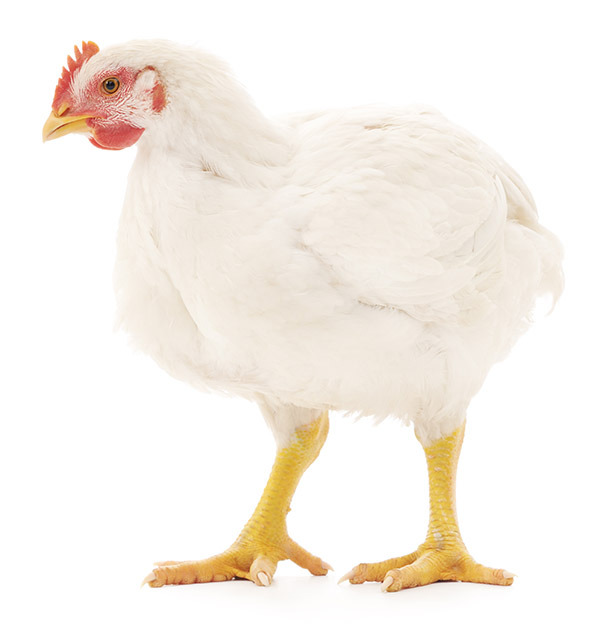Why are Chickens SO Big Today?
Information from the National Chicken Council and the USA Poultry & Egg Association
This is a modern chicken.
Thanks to a combination of selective breeding and rearing practices, most of today's chickens raised for meat (commonly known as "broiler" chickens) are a much healthier and faster-growing stock than the chickens of a few years ago. In fact, back in the early days of the commercial poultry industry, each chicken required approximately 16 pounds of feed to achieve a four-pound weight. Today, that amount of feed has been reduced by more than half – less than seven pounds of feed – to grow the same size bird, all without the use of growth hormones or steroids. These tremendous advances in genetics and feed efficiency also contribute to a better environment for us all.
These chickens are raised in large, spacious barns. These barns are sophisticated, secure facilities with strictly controlled temperature, humidity and ventilation systems inside – which provide vital protection from the outdoor elements, disease and predators. Inside the poultry barns, the chickens are free to walk and bed down on the litter.
These chickens are fed a wholesome diet consisting of grains like corn and soybeans – along with nutritional supplements such as vitamins and minerals. Contrary to some myths, growth-enhancing additives such as hormones or steroids are never used.
Today, family farmers own and operate the majority of the poultry farms in the United States. The top priority of these farmers is to raise healthy, top quality chickens using national animal welfare guidelines and audit checklists. These guidelines cover every phase of the chicken's life and offers science-based recommendations for humane treatment.

